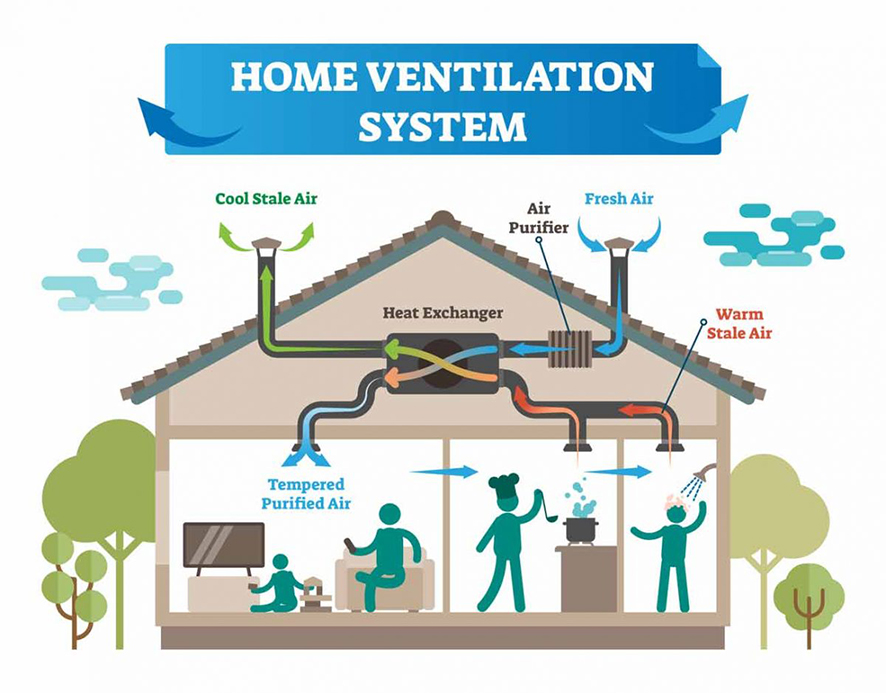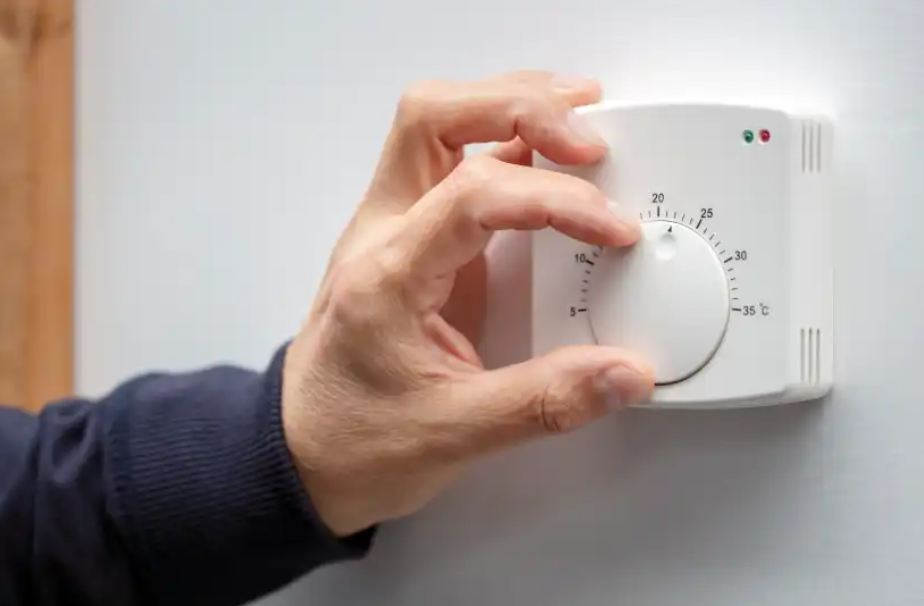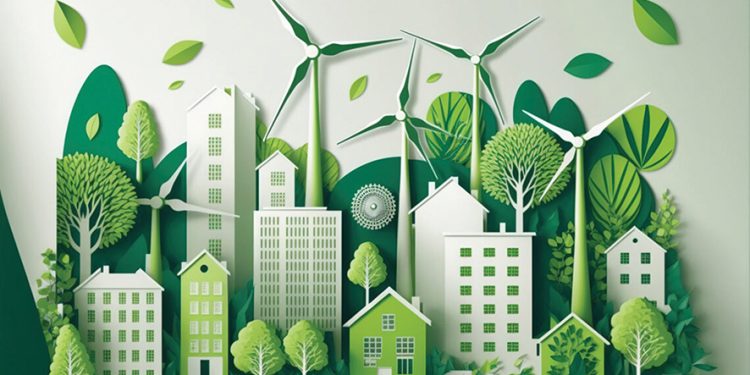As energy prices soar and the public becomes increasingly aware of the environmental risks associated with the burning of fossil fuels, home and office energy efficiency is hitting the top of people’s priority lists. And if it isn’t, it should be! As a property owner myself, looking with newly opened eyes at her (definitely energy in-efficient!) home, I realize it is beyond time to join those globally who are now actively upgrading their buildings to be more energy-efficient – in the long-term saving both money and (hopefully!) our planet.
Energy efficient buildings not only provide comfortable living and working environments, but also cut down on energy expenditure, making better use of our planet’s resources. When done right, they also contribute to cleaner indoor air quality by employing cleaner combustion methods and offering better ventilation than traditional structures – meaning they are healthier! In short, when you prioritize energy efficiency in construction or renovation, you are choosing a smart, cost-effective strategy for combating climate change and safeguarding user health.
What Does “Energy Efficiency of Buildings” Mean?
Energy efficiency is all about using less energy to achieve the same task or goal. Energy-efficient buildings demand less energy for heating, cooling, and powering various devices, while in a factory, for example, it means running systems and equipment that use less energy in the manufacturing process.
Setting yourself the goal of making your home and office more energy efficient is a simple and cost-effective approach to tackling climate change, reducing your energy costs and boosting business competitiveness. Moreover, energy efficiency is pivotal to achieving global net-zero carbon dioxide emissions, as picking this path supports important global decarbonization initiatives – contributing to a much bigger mission than just your own health and savings!
Why Are Most Of Our Current Buildings “Energy Inefficient”?
Centuries ago, constructing buildings with energy efficiency in mind was a priority, even if the concept didn’t yet have a name. But as fuel for heating became increasingly available and ever more affordable, attention shifted towards features like bigger windows offering panoramic views, interconnected spacious rooms, lofty ceilings, and, to heat it all, oversized boilers toiling away inefficiently in basements. Further, with the widespread adoption of air conditioning, considerations for what we now term ‘sustainability’ were largely thrown out of those expansive windows.
Next time you’re walking around Tbilisi, or taking a drive past those beautiful 19th and early 20th century villages in Georgia’s regions, pay attention to the houses there. You’ll see porches, balconies, wide roof overhangs and trees giving summer shade; rooftop skylights, which maximize natural sunlight and encourage ventilation; and thick masonry walls made from stone or brick to retain heat in winter and keep the rooms cool in summer. On closer inspection of these old buildings, you might also see traditional exterior shutters and interior Venetian blinds on the windows, making them more energy-efficient than modern windows, or the remains of light-colored paint on exterior walls, chosen specifically to reflect the hot summer sun, resulting in cooler interior living spaces. Look at the position of the windows in these old buildings too: Where possible, they were only installed where they could effectively allow for lighting and ventilation. Modern architecture, by contrast, relies on more windows than are necessary as a stylistic measure.

Why Should We Make Our Buildings Energy Efficient?
To save money, to improve comfort and health, and to reduce our consumption of valuable resources. Yes, it can be an expensive investment, but you shouldn’t focus solely on the upfront expenses, as these can be discouraging; instead, evaluate the full lifetime costs to find that all-important break-even point that shows you are doing the right thing for you, your employees, your family and the planet.

An Important Note
Prior to kicking off any construction or renovation project, it’s crucial to take into account both the carbon footprint of your chosen materials and the operational carbon emissions stemming from elements such as heating systems: You need to think about not only the quantity of energy you’re going to be using, but also its source. There are plenty of sites and tools online to help you and your architect plan right. Have a look here as a starting point: circularecology.com/carbon-footprint-calculators-for-construction
How To Make A Building Energy Efficient (New Buildings)
This section of my article is aimed at those lucky people designing a new home or office, but it is also well worth your reading time even if you’re already in-situ in an older building. Read on!
If you’re aiming for a cost-effective, zero net energy building project and are starting from scratch, you are at a distinct advantage. We advise you start by first estimating the building’s energy consumption using that energy modeling software we mentioned above. After that, you can take your pick from the tips below, or, better yet, go all-in for top energy efficiency.

1) Use the Sun for “Solar Tempering” – Leveraging sunlight for heating via south-facing windows during the winter reduces heating expenses, while shading these windows during the summer months cuts down on your cooling costs. You can also use the sun for renewable energy, as solar panels can power all the energy needs of a home or office, including lighting, heating and cooling systems, appliances and hot water. Be ready to make space for the necessary equipment, though!
2) Super-Seal the Building Envelope – Super-sealing the exterior of the building (its “envelope”) is the single most cost-effective measure you can take to improve the energy efficiency of your ultimate zero energy home or office. This job will require careful assessment and a lot of caulk and foam! On doing my research, I was surprised how many “leaks” my house had: Windows and door frames were the obvious points, but also sockets and switches, anywhere plumbing or wiring comes through from one room or floor to another; even the joints of walls! Next, after making your building airtight, super insulating is probably the second most cost-effective strategy to aim for – using foam panels and thick attic insulation.
 3) Create an Energy Efficient, Fresh Air Supply – Even though we just emphasized the importance of plugging the leaks in your home, a continuous source of fresh filtered air and moisture control are critical. Highly energy efficient ventilation systems (called Heat Recovery Ventilation, HRV) systems, or energy recovery ventilation (ERV) systems, expel stale air while recovering heat and returning that same heat to the home or office with the fresh air. Such a system is a hefty financial investment to make, but one that is highly beneficial for user health- and it will definitely pay back in the long-term.
3) Create an Energy Efficient, Fresh Air Supply – Even though we just emphasized the importance of plugging the leaks in your home, a continuous source of fresh filtered air and moisture control are critical. Highly energy efficient ventilation systems (called Heat Recovery Ventilation, HRV) systems, or energy recovery ventilation (ERV) systems, expel stale air while recovering heat and returning that same heat to the home or office with the fresh air. Such a system is a hefty financial investment to make, but one that is highly beneficial for user health- and it will definitely pay back in the long-term.
4) Select an Energy Efficient Heating System – Choosing a modern heating system will boost the energy efficiency of your new-build. Heat pumps are the most energy efficient heating systems around, while gas furnaces are the cheapest and most commonly used. Their efficiency in heating is rated with HSPF (heat pump) or AFUE (furnace). The higher the rating, the more efficient it is. A geothermal heat pump is the best option, and if you can afford the installation cost, they say it can cut your heating bills by up to 70%!
5) Install Energy Efficient Lighting – We’ve all heard that LED bulbs are the way to go today- being safer, longer-lasting and ultimately easier on the pocket when it comes to your bills, but where you put those bulbs is also an important factor to think about while planning your new home or office. Locating lights strategically, and using natural light as effectively as possible, can drastically reduce a home or office’s energy use.

6) Select Energy Efficient Appliances and Electronics – When you’re shopping for your refrigerator, microwave or dishwasher, pay attention to the energy rating (those rainbow stripes that show you if the appliance is “A” “B” “C” or lower). This “energy performance certificate” is nothing to do with how well the machine functions, but how much (or ideally little) energy it needs to do its job. Green (A,B,C) class appliances may cost more at the outset, but they will ultimately be better for your energy bills and the planet by using less electricity!
How To Make A Building Energy Efficient (Existing Buildings)
If, like me, you made some uneducated, cost-cutting choices in your build, or are living or working in an older and less energy efficient structure, fear not- you can still turn things around!
When we talk about making an older building energy efficient, if money is no object, most, if not all of the above six steps can be applied. Those on a budget, however, should start with the envelope by sealing the windows, walls, door openings, etc., as mentioned above. With windows, think “repair, preserve and seal” if you can, rather than diving into the expense of replacing outright.

Insulate the exterior walls, though be aware that stone is porous. This means it needs to breathe to keep the interior air healthy and to prevent damp. You can insulate from the inside, but we suggest you get some professional advice first, to make sure you don’t end up trapping damp in your walls. If nothing else, lay down some thick-as-you-can-afford insulation in the attic, as the cost of insulating the roof is usually lower than the cost of solid wall insulation. Typically, about 25% heat is lost through the roof, in comparison to 35% through the walls, 15% through the floor and 25% from windows and draughts.
The US Energy Information Administration says that heating and cooling your home typically makes up about 51% of your utility bill, so it is worth investing in a system that saves and which will also enhance your property value. As such, once your envelope is set, you should take a look at your heating system. If you have a pump, consider installing programmable thermostats to control when the radiators are on. And if you decide you need a new heating system, but the cost is deterring you, remember: While it’s a significant investment, the benefits are substantial and you may well find flexible payment options out there! Definitely avoid sizing and purchasing a heating system independently, though. It’s crucial to collaborate with a reputable HVAC contractor or home performance professional so no mistakes are made or money is wasted.

On A Really Tight Budget?
If the bigger steps above are financially beyond you, you can start on your energy efficiency path by taking simple steps that make a good impact on your bills and comfort but which don’t change the building fabric itself. Turn your thermostat down a degree in winter, not enough to put a chill in your bones, but energy-impacting nonetheless; fix the caulking/weather-strips in your windows and doors- this and a thick pair of curtains can be just as effective as more expensive measures; use floor coverings or rugs to block air infiltration and keep your feet warm; replace your bulbs with LEDs where possible; and plant a shade tree outside – ideally a deciduous tree which loses its leaves in winter and allows sunlight to hit the building, and which provides shade in the summer to keep the building cooler. The tree should be put at a safe distance from the house to avoid damage to the foundation and falling limbs during a windstorm!
Remember that where energy efficiency is concerned, every little helps, but the bigger the better – for your health, your pocket, and for the good of the planet!
In a future issue of GT, I’ll be zooming in locally and looking at Energy Efficient Buildings in Georgia – Where We Stand and Energy Efficiency in Georgia – The Government’s Promise. Be sure to stay tuned.
***
This article was inspired by the EU-funded Georgia Energy Sector Reform Program (GESRP)’s three-day media mentoring program ‘Covering Energy Efficiency and Renewable Energy Issues in Georgia’ on April 19-21, 2024, at the Tsinandali Estate, Radisson Collection Hotel.














